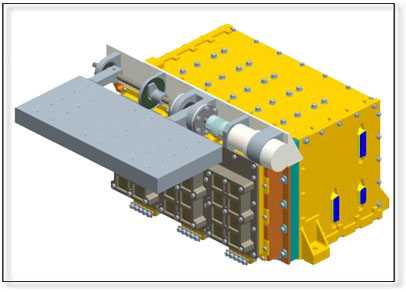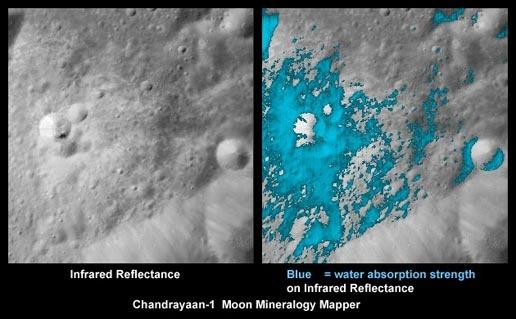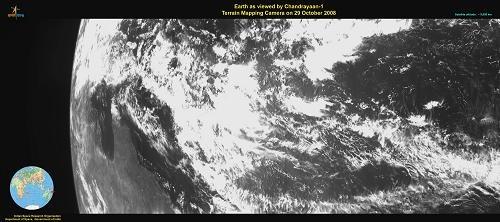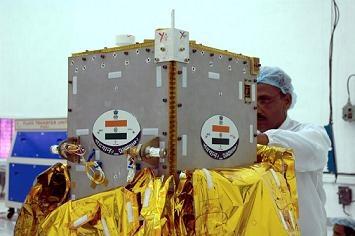When a primary X-ray beam strikes a sample the x-ray can either be absorbed or scattered by the atoms in the sample. The X-ray when absorbed by an atom transfers all its energy to an innermost electron. If the primary X-ray has sufficient energy, this electron gets ejected from the inner shell creating vacancies causing an unstable condition for the atom. The atom returns to its stable condition when electrons from an outer shell is transferred to the inner shell and in this process a characteristic x-ray is released. Because electrons in atom of a given element has a unique set of energy levels, each element produces x-rays with a unique set of energies. Thus one can non-destructively measure the elemental composition of a sample. The process of emission of characteristic x-rays is called �X-ray Fluorescence� or XRF. The Sun provides a natural source of X-rays and strikes the lunar surface and it is possible to infer elemental composition of lunar surface through detection of characteristics X-rays.
Scientific Objective
The primary goal of the C1XS instrument is to carry out high quality X-ray spectroscopic mapping of the Moon, in order to constrain key questions on the origin and evolution of the Moon. C1XS would use X-ray fluorescence technique (1.0-10 keV) for measuring elemental abundance of Mg, Al, Si, Ca, Fe, Ti distributed over the surface of the Moon.
Payload Configuration Details
C1XS has been designed as a thin, low profile detector. The instrument uses the recently developed technology of the Swept Charge Device (SCD) X-ray sensors mounted behind low profile gold/copper collimators and aluminium /polycarbonate thin film filters. The system has the virtue of providing superior X-ray detection, spectroscopic and spatial measurement capabilities, while also operating at near room temperature. A deployable shield protects the SCDs during passages through the Earth� s radiation belts, and from major particle events when at the Moon. In order to record the incident solar X-ray flux at the Moon, which is needed to derive absolute lunar elemental surface abundances, C1XS carries an X-ray Solar Monitor.
In normal solar conditions, C1XS will be able to detect elemental Mg, Al and Si on the lunar surface. During solar flare events, it would be possible to detect other elements such as Ca, Ti and Fe.
Heritage
The primary C1XS instrument is based on the successful D-C1XS instrument on the ESA SMART-1 mission. In comparison to D-C1XS instrument on SMART-1 the C1XS experiment onboard Chandrayaan-1 would be carrying out further observations by exploiting the following situations
- Observe the Moon during the rising phase of the solar cycle when X-ray signals are expected to be significantly enhanced
- Reach the lunar orbit in much less time and hence would be subjected to significantly less damaging radiation enroute
- Would observe the Moon from a much closer (100 km) circular, polar orbit
- Will have increase in collection area from the redesigned collimator and facet geometry
Chandrayaan-1 X-ray Spectrometer (C1XS) is realized through ESA with collaboration between Rutherford Appleton Laboratory, UK and ISRO Satellite Centre, ISRO. Part of this payload is redesigned by ISRO to suit Chandrayaan-1 scientific objectives.
Rutherford Appleton Laboratory D-C1XS websites
http://www.ssd.rl.ac.uk/SMART-1/index.htm
Aberystwyth D-C1XS website
http://www.aber.ac.uk/physics/missions_v1.shtml
A major success of the instrument on board Smart-1 has been the first unambiguous remote sensing of Calcium on the Moon
http://smart.esa.int/science-e/www/object/index.cfm?fobjectid=37455



